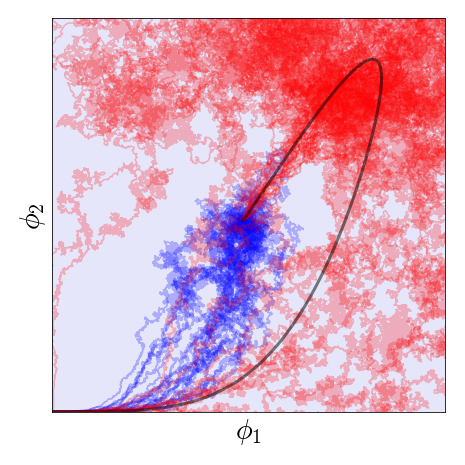Cosmic inflation is a phase of accelerated expansion that took place in the early universe. It proceeds at very high energies, larger than those probed in particle accelerators. At those scales, various physical fields are expected to be at play.
Yet, astrophysical observations are consistent with inflation being driven by a single scalar field. This apparent contradiction is one of the most intriguing puzzles in modern cosmology. This work reveals that quantum mechanical effects hold the key to resolving it.
The fields that drive inflation are subject to quantum fluctuations, which form the seeds of all cosmological structures. They have been observed with high precision, in particular in the cosmic microwave background. As a consequence, different regions of space expand at different rates. Using the formalism of constrained stochastic processes, it is shown that those regions that expand most inflate along the lightest degree of freedom, after heavier fields are quickly washed away. Since those regions dominate the final volume of the universe, this selection effect explains why observers like us are more likely to witness single-field behaviour in their local surroundings.
These findings underscore that, once volume weighting and quantum diffusion are properly accounted for, single-field phenomenology emerges as a generic prediction of inflation.
This work was carried out at LPENS in the Cosmology & Gravitation team by Koki Tokeshi (PhD student at Tokyo University, visiting student at LPENS in 2023) and Vincent Vennin (CNRS researcher at LPENS). It is published in Physical Review Letters.

Inflation driven by two scalar fields ϕ1 and ϕ2 (in a double quadratic potential). Quantum fluctuations lead to trajectories being stochastic, with each point in space undergoing a different realisation. Along the blue curves the size of the universe grows by e500, and by e200 along the red curves (the black line is the average of the red realisations). Regions of space that inflate by a larger amount are diverted towards and thus appear single-field to late-time observers.
More:
https://journals.aps.org/prl/abstract/10.1103/PhysRevLett.132.251001
Author affiliation:
Laboratoire de physique de L’École normale supérieure (LPENS, ENS Paris/CNRS/Sorbonne Université/Université de Paris)
Corresponding author: Vincent Vennin
Communication contact: L’équipe de communication









